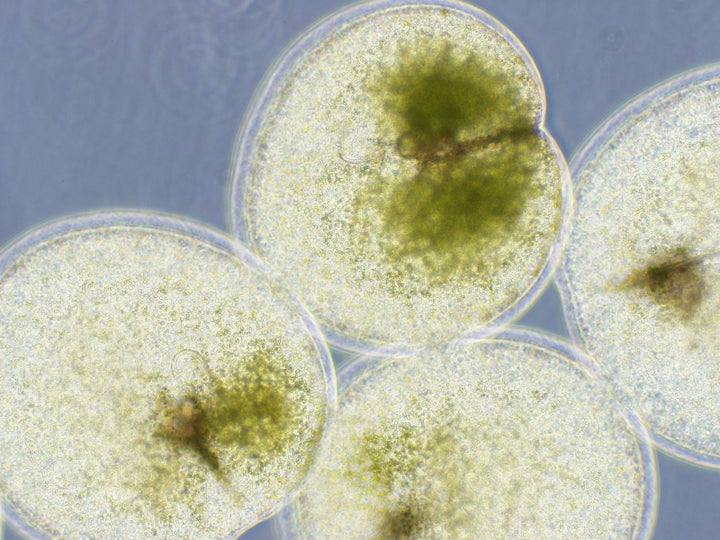A blue glow lighting up the waters off the shores of Tasmania has captivated photographers and onlookers ― but it’s also a troubling example of how rising ocean temperatures have disrupted marine ecosystems.
A mass of Noctiluca scintillans, a type of plankton, produced the bioluminescent glow known as “sea sparkle” this week on the north coast of the island.
Photographer Leanne Marshall captured the display at Rocky Cape in dramatic nighttime shots.
“To say I was excited to finally see some #bioluminescence was an understatement,” she wrote on Instagram.
While the glowing water has a strange, otherworldly beauty, the single-celled organism’s bioluminescent displays have actually occurred periodically in the island’s waterways in recent years.
Noctiluca only showed up in Tasmania beginning in 1994, according to New Scientist. The frequency of the blooms has since increased, said Anthony Richardson, a researcher with Australia’s Commonwealth Scientific and Industrial Research Organization, and climate change could be playing a role.
This type of plankton, dinoflagellates, “tend to do better in warmer water and a stable water column ― both of which happen with climate change/global warming,” Richardson told The Huffington Post in an email. “I think that climate change can lead to more Noctiluca blooms.”
Noctiluca has appeared in the Southern Ocean and begun to spread to the south coast of Australia, Richardson said, due to warmer waters.
The blooms aren’t toxic for humans, but can affect other marine life. Noctiluca gobbles up plankton and “acts like a vacuum cleaner,” University of Tasmania professor Gustaaf Hallegraeff told HuffPost Australia in the fall when sea sparkle appeared in Tasmania’s Derwent Estuary.
When large blooms die and decompose, they strip oxygen from the water, a problem for other species and aquaculture industries and fisheries, Richardson said.
Noctiluca blooms form in warm waters around the globe, including a massive one that is currently spreading green ooze in the Arabian Sea, a twice-annual event. The outbreaks off the coast of Oman ― which can be three times the size of Texas ― weren’t seen until the 1990s and are now disrupting the food chain, according to Joaquim Goes, a marine biologist at Columbia University.

The red variety of Noctiluca, the type seen in Tasmania, also appears off the coast of China, in the Gulf of Mexico and near Seattle, Goes said in an email.
Goes added that the rash of blooms worldwide “are connected in a sense ― they are being caused by the warming trend and increased stratification of the upper oceans.”
Sea surface temperatures have been rising since the early 1900s and are at a record high. Half of the heat increase in the global oceans since 1865 occurred during the past two decades, according to research from the Lawrence Livermore National Laboratory and National Oceanic and Atmospheric Administration.
